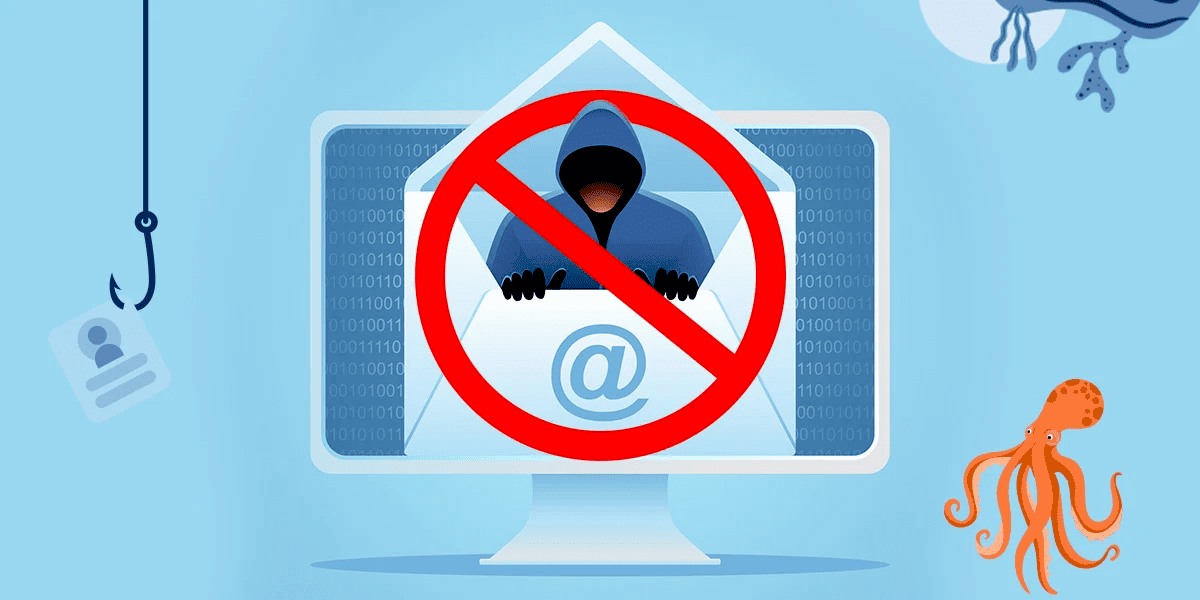Understanding Phishing: What Exactly is Phishing and How Does it Work?
Phishing is a deceptive tactic used by cybercriminals to trick individuals into revealing sensitive information, such as passwords, credit card numbers, and personal identification. The term ‘phishing’ derives from the idea of fishing for information, where attackers use fake bait (like emails or websites) to lure victims into their traps. Phishing attacks often occur through emails that appear to come from reputable sources, leading individuals to click on links or download attachments that compromise their security.
The mechanics of phishing are fairly straightforward. Attackers send out a large number of emails, hoping that a percentage of recipients will fall for the ruse. These emails typically contain a sense of urgency, prompting the recipient to act quickly. For example, they may claim that your bank account has been compromised and that immediate action is necessary. This tactic plays on human psychology—fear and urgency are powerful motivators.
Once a victim clicks on the provided link, they are usually directed to a fake website that closely resembles a legitimate one. Here, they might be prompted to enter personal information, which the attacker then captures. It’s a simple yet effective method that exploits trust and urgency.
The Anatomy of a Phishing Attack: What Components Make a Phishing Attack Successful?
Successful phishing attacks share several common components that contribute to their effectiveness:
- Imitation of Trusted Sources: Phishing emails often mimic legitimate organizations. This could be a bank, social media platform, or even a government agency. By using familiar logos and language, attackers create a sense of authenticity.
- Urgent Language: Phishing messages frequently contain urgent calls to action, such as “Your account will be suspended unless you verify your information immediately!” This urgency pushes victims to act quickly without thinking.
- Malicious Links: The link provided in a phishing email often leads to a website that looks genuine but is designed to capture user credentials. Hovering over the link may reveal a suspicious URL that differs slightly from the legitimate site.
- Attachments: Some phishing emails contain malicious attachments that, when opened, can install malware on the victim’s computer, further compromising their security.
- Social Engineering: Phishing exploits human psychology. Attackers use social engineering tactics to manipulate victims into providing information. This might include impersonating a friend or creating a fake emergency scenario.
Understanding these components can help individuals recognize phishing attempts and reduce the likelihood of falling victim to such scams.
Recognizing Fake Links: How Can I Spot a Fake Link Before Clicking on It?
Recognizing fake links is crucial in avoiding phishing attacks. Here are some strategies to help you spot a fake link:
- Hover Over Links: Before clicking on a link in an email, hover your mouse over it. This will reveal the actual URL. Check for any discrepancies—legitimate links should match the organization’s official website.
- Look for HTTPS: Secure websites use HTTPS rather than HTTP. While this is not a foolproof method (as some phishing sites may also use HTTPS), it’s a good initial check.
- Check for Misspellings: Phishing links often contain misspellings or unusual characters. A slight alteration in a URL can indicate a phishing attempt.
- Verify the Source: If an email claims to be from a reputable organization but contains suspicious links, verify the email’s authenticity by contacting the organization directly using a phone number from their official website.
- Use Link Scanners: Several online tools can scan links for safety. Services like VirusTotal can help assess whether a link is safe to click.
By employing these techniques, you can reduce the risk of falling prey to phishing scams and protect your personal information.
Common Phishing Scams: What Are Some Popular Phishing Scams People Fall For?
Phishing scams come in various forms, each designed to exploit unsuspecting victims. Here are some of the most common types:
- Email Phishing: This is the classic form of phishing where attackers send emails that appear to be from legitimate companies. These emails often contain links to fake websites or attachments that can install malware. For example, an email may claim to be from your bank, asking you to verify your account details.
- Spear Phishing: Unlike broad email phishing, spear phishing targets specific individuals or organizations. Attackers gather personal information to create highly convincing emails. For instance, an employee might receive an email that looks like it’s from their CEO, requesting sensitive information.
- Whaling: This is a type of spear phishing aimed at high-profile targets like executives. The stakes are higher, and the messages are often tailored with even more precision to trick the recipient into revealing critical information.
- Vishing (Voice Phishing): This involves phone calls instead of emails. Scammers impersonate legitimate companies, asking for personal information over the phone. For example, a caller might pretend to be from your bank, claiming there’s an issue with your account.
- Smishing (SMS Phishing): This tactic uses text messages to lure victims. A text might claim that you’ve won a prize or need to verify your account. Clicking on the provided link can lead to malicious sites.
Recognizing these common phishing scams can help individuals protect themselves and avoid falling victim to these deceptive tactics.
Real-Life Phishing Examples: Can You Share Some Real Stories of Phishing Victims?
Real-life phishing stories underscore the dangers of these scams and highlight how easy it is to fall victim. Here are a few notable examples:
- The Target Breach (2013): One of the most infamous phishing incidents occurred when hackers gained access to Target’s network through a third-party vendor. They sent a phishing email that tricked the vendor into revealing login credentials. This breach compromised the credit card information of millions of customers.
- Google and Facebook Scam (2013-2015): A Lithuanian man impersonated a vendor and tricked Google and Facebook into transferring over $100 million. He sent emails with fake invoices that appeared legitimate, leading to massive financial losses.
- Ubiquiti Networks (2015): This tech company lost $46.7 million due to a phishing attack. The attackers impersonated a third-party supplier and requested wire transfers, which were completed before the fraud was detected.
These stories illustrate the serious repercussions of phishing attacks, emphasizing the need for vigilance and robust security measures.
Tools for Detection: What Tools Can Help Me Detect Phishing Attempts?
Detecting phishing attempts requires the right tools. Here are some effective resources to help identify and mitigate phishing risks:
- Phishing Filters: Many web browsers and email providers include built-in phishing filters that warn users about potentially harmful sites and emails. Always enable these features for added security.
- VirusTotal: This free tool allows users to scan URLs and attachments for malicious content. By submitting a link, you can see if it has been flagged as suspicious by multiple security vendors.
- PhishTank: A community-driven website that collects phishing URLs. Users can check if a URL is reported as a phishing site and submit new scams they encounter.
- Anti-Virus Software: Comprehensive security software often includes features to detect phishing attempts. Look for tools that provide real-time scanning and web protection.
- Browser Extensions: Extensions like “Netcraft” or “Web of Trust” (WOT) can help identify risky websites. They provide reputation ratings based on user feedback and site safety.
Utilizing these tools can significantly enhance your ability to detect phishing attempts and safeguard your sensitive information.
Strategies to Avoid Phishing: Proactive Measures to Protect Yourself
Phishing attacks are a prevalent threat in the digital age, but there are effective strategies to mitigate the risks. Here are proactive measures to avoid phishing:
- Educate Yourself: Knowledge is your first line of defense. Familiarize yourself with common phishing tactics and stay updated on the latest scams. Training sessions or online courses can enhance your understanding.
- Use Strong Passwords: Create unique, complex passwords for different accounts. Utilize password managers to generate and store these securely, minimizing the risk of credential theft.
- Enable Two-Factor Authentication (2FA): Whenever possible, activate 2FA on your accounts. This adds an additional layer of security, requiring a second form of verification beyond just your password.
- Regularly Update Software: Keep your operating system, browsers, and security software updated. Regular updates help patch vulnerabilities that attackers may exploit.
- Be Cautious with Personal Information: Limit the amount of personal information you share online. Check privacy settings on social media and be mindful of what you disclose publicly.
Implementing these strategies can significantly reduce your chances of falling victim to phishing scams and enhance your overall online security.
The Role of Social Engineering in Phishing Attacks
Social engineering is a critical component of phishing attacks, as it exploits human psychology rather than technical vulnerabilities. Attackers manipulate victims into divulging sensitive information through various tactics:
- Impersonation: Phishers often impersonate trusted entities, such as banks or colleagues. This deception builds trust, making victims more likely to respond to requests for information.
- Creating a Sense of Urgency: By instilling fear or urgency—such as claiming your account will be suspended—attackers compel victims to act quickly, often bypassing rational thinking.
- Utilizing Familiarity: Scammers may reference personal details gathered from social media, making their approach appear more legitimate. This familiarity can disarm skepticism and encourage compliance.
- Exploiting Emotions: Phishing schemes often play on emotions, such as excitement or concern. For example, a message about winning a prize or a security alert can provoke immediate reactions.
Understanding social engineering techniques empowers individuals to recognize and resist phishing attempts, reinforcing the importance of critical thinking when confronted with unsolicited requests for information.
What to Do If You Encounter a Phishing Attempt
Encountering a phishing attempt can be alarming, but knowing how to respond can mitigate potential damage. Here’s a step-by-step guide:
- Do Not Engage: Avoid clicking on links or responding to the phishing email. Engaging can confirm to attackers that your email is active.
- Report the Attempt: Notify your email provider about the phishing attempt. Most services have mechanisms for reporting suspicious emails, which helps protect other users.
- Delete the Email: After reporting, delete the phishing email from your inbox. This prevents accidental engagement in the future.
- Check Your Accounts: Review your accounts for any unauthorized transactions or changes. If you suspect compromise, change your passwords immediately and enable 2FA where available.
- Educate Others: Share your experience with friends or colleagues to raise awareness. The more people know about phishing tactics, the less likely they are to fall victim.
Taking these steps not only helps protect you but also contributes to a broader effort to combat phishing and cybercrime.
The Evolving Nature of Phishing in the Digital Age
As technology advances, so do phishing tactics. The future of phishing is marked by increasingly sophisticated methods:
- AI and Automation: Cybercriminals are leveraging artificial intelligence to create more convincing phishing messages and automate attacks, increasing their efficiency.
- Mobile Phishing: With the rise of mobile device usage, phishing is shifting towards SMS and app-based platforms, making it crucial for users to remain vigilant across all devices.
- Targeted Attacks: Phishing is becoming more personalized, with attackers using data mining techniques to craft highly tailored messages for specific individuals or organizations.
- Integration with Malware: Many phishing attempts now incorporate malware, which can install silently on a victim’s device, further compromising security and enabling additional attacks.
- Increased Use of Social Media: Attackers are increasingly using social media platforms to gather information and execute phishing attacks, leveraging user connections for credibility.
Staying informed about these evolving tactics is vital for effective prevention. By continuously updating security practices and education, individuals and organizations can better protect themselves against the ever-changing landscape of phishing attacks.





